OUYA retail system review
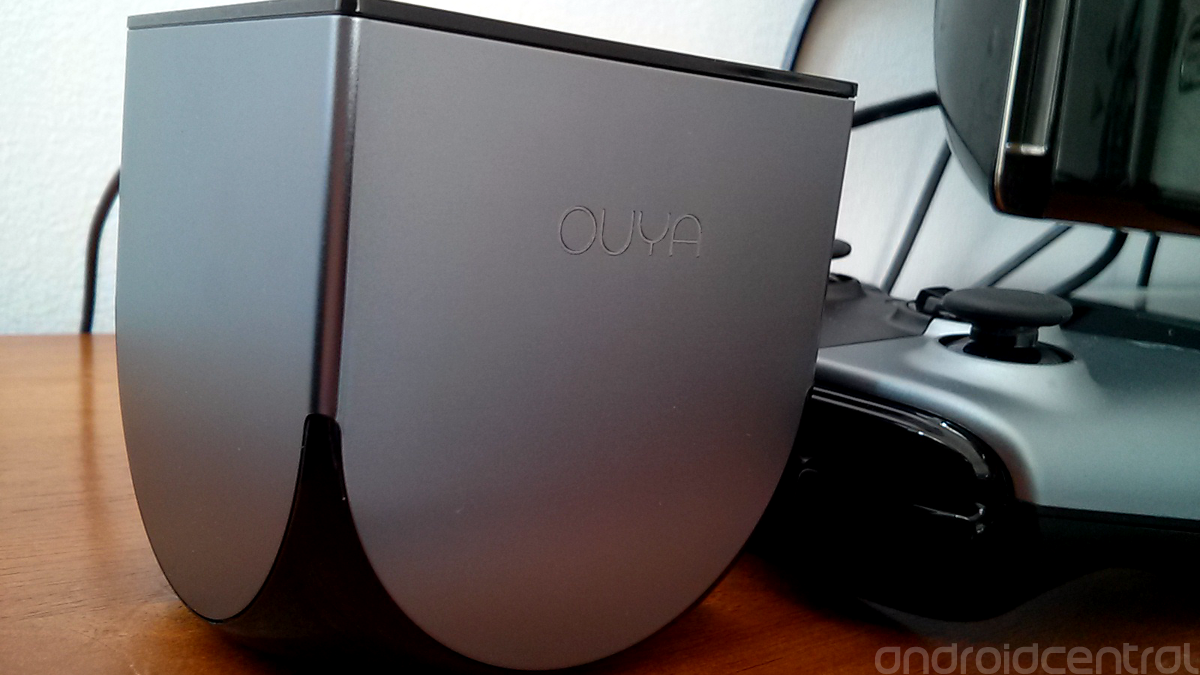
Last year, a project for the Android-powered video game console "OUYA" (pronounced OOO-yah) was founded, using Kickstarter to raise funds for development costs. Originally asking for $950,000 from Kickstarter backers, the project raised over $8.5 million -- making it one of the most successful Kickstarter campaigns in history. The people had spoken: this was a niche in the gaming market that needed to be filled.
After getting initial units into the hands of developers, the library of OUYA games began to grow. User feedback was taken from those with pre-release units, and hardware changes were made based on that feedback, showing thoughtfulness and desire by the OUYA team to do everything possible to make their console succeed.
Last month, OUYA launched at retail locations -- becoming available to the general public. With a price tag of only $99 and a library of downloadable games that are free or at least free to try, the self-proclaimed "OUYA Revolution" has begun. Does OUYA make good on its promises of revolution? Can it -- and should it -- be compared to consoles from Sony, Microsoft, and Nintendo? How well does it function as an actual Android device? We have the full review.
Pros
- Hundreds of free/freemium games. Only $99 for the console and one controller. Many games work with other controllers (PS3, Xbox, etc.) for multiplayer mode. Support for computer peripherals like (e.g. mouse and keyboard) make navigation/web browsing easier. Full HD support using the included HDMI cable. Games are optimized for OUYA's resolution and included controller. Easy to sideload non-OUYA Android apps. Openness allows easy installation of custom software.
Cons
- Only a few high quality games. Occasional OUYA menu and in-game stability programs can be frustrating. Controller buttons can sometimes get stuck, and controller input will periodically not be recognized or will lag if not close to the console. Brief internet connectivity loss at random times. Slowdown in some graphic-intensive games. No official support for streaming content (Netflix, Hulu, etc.) or games already purchased in the Google Play Store.
The Bottom Line
The OUYA hardware
Be an expert in 5 minutes
Get the latest news from Android Central, your trusted companion in the world of Android
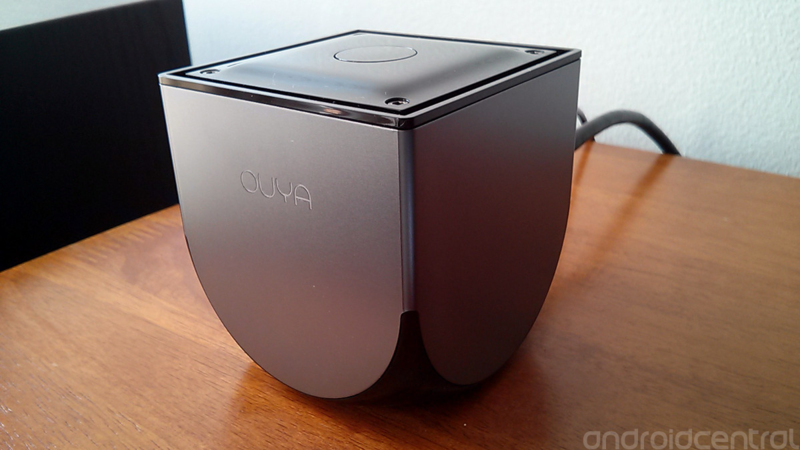
The console itself is contained in a small 3-inch cube, with silver and black paneling. The power button on top illuminates when the device is on, and can be held for 5 seconds for a hard shut down (versus the sleep mode option accessible through the home screen). In case of overwhelming fits of curiosity, there are 4 screws on the top panel for easy disassembly. It's a sharp little case, and makes a nice visible addition to any other TV-related electronics.
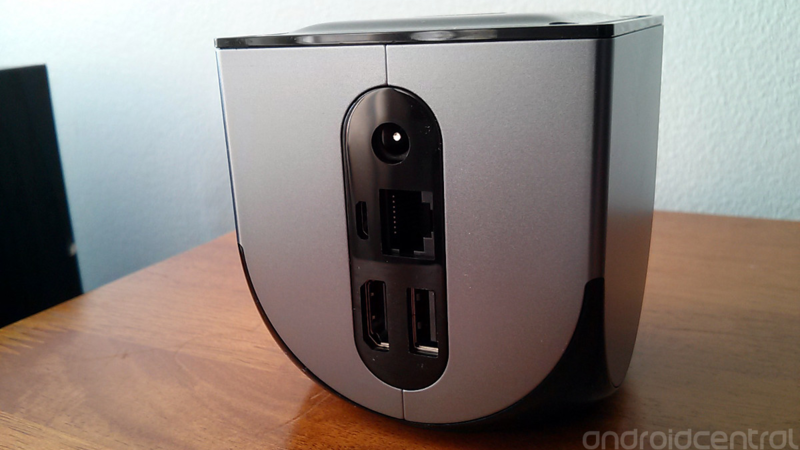
Around back, there's a place for the AC power adapter up top, a micro-USB and Ethernet port in the middle, and an HDMI and USB port at the bottom. Since the OUYA is actively cooled, there is a fan underneath, and four rubber feet to allow air flow. An HDMI cable and AC adapter are included, making OUYA ready to play out of the box.
Connecting a computer to the OUYA via its micro-USB port allows access to the files and folders in the on-board storage, allowing easy access to manage data on the OUYA. It also allows for the use of ADB, which is what I used to take the screenshots later in this review.
The full-sized USB port can be used to connect peripherals like a computer mouse or keyboard, or for additional storage via a USB drive. USB hubs will also work for connecting multiple accessories. OUYA games can be stored on removable storage, as long as the game's developer allows for this feature.
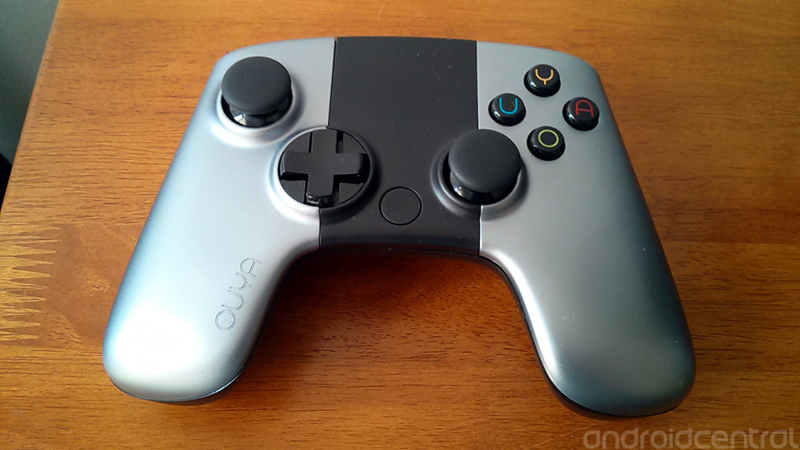
The controller has two analog sticks, a directional pad, four buttons cleverly spelling O-U-Y-A, a menu/system button in the center, and a touchpad (the black area in the middle) for mouse-like input. The left and right analog sticks can be pressed down for an additional two buttons, L3 and R3, respectively. I had some problems with the "U" button sticking; no other buttons had problems with getting stuck. The touchpad can be a little over-sensitive, but it gets the job done. A wired or wireless computer mouse works much better though.
OUYA can be very sensitive when it comes to controller range. Sitting a few feet away in the wrong direction can cause controller input lag, missed button presses, and sometimes even complete unresponsiveness for long periods of time. This seems to be a problem with the console itself, because I had these problems with both the OUYA controller and a PS3 controller at the same time during multiplayer gaming. Positioning the player(s) in optimal positions in relation to the OUYA console (the closer the better) can greatly minimize controller input problems.
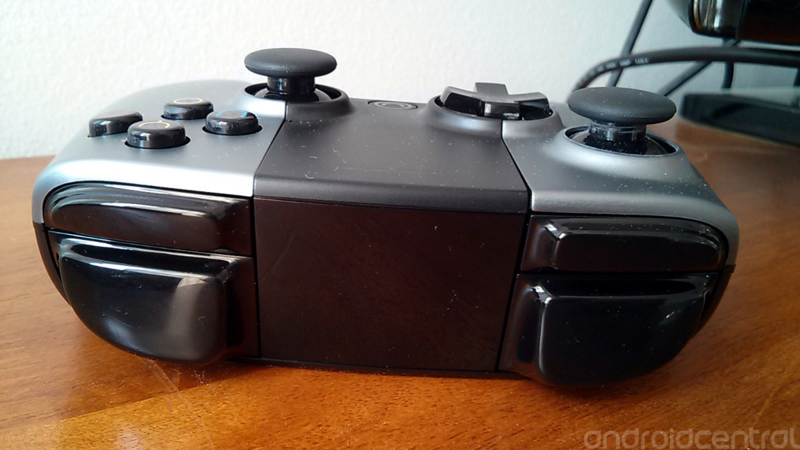
The top of the controller has an additional 4 buttons. The two closest to the front face of the controller are the digital bumper buttons, L1 and R1. The two larger buttons that are closer to the controller's rear are analog triggers L2 and L3. There's not much to say about them, which means they worked as intended.
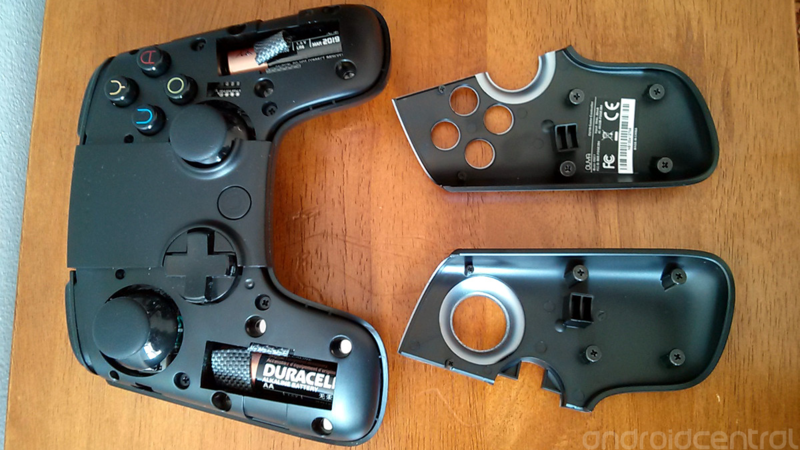
Figuring out where to put the batteries was interesting -- almost like one of those Chinese puzzle boxes. Sure, the directions are probably online somewhere, but where is the fun in that? Each controller "arm" houses a single AA battery; both are included in the box. This particular design makes the controller feel light and a little hollow, but it does look pretty cool disassembled.
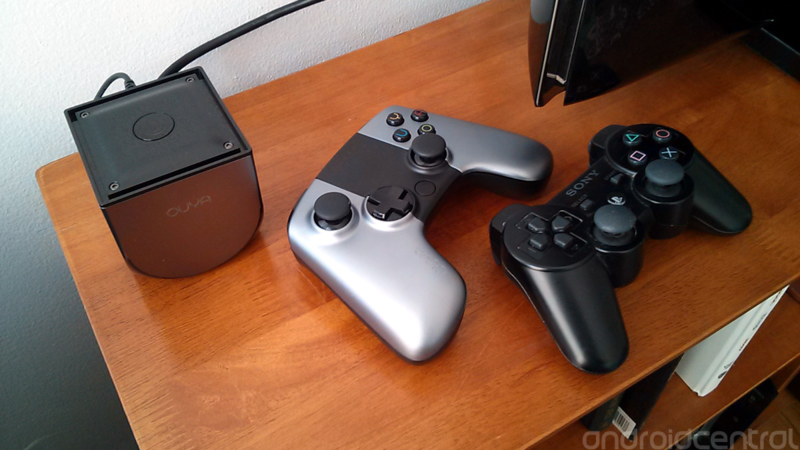
For multiplayer sessions, OUYA controllers can be purchased separately for about half the price of the console itself ($49). This price is relatively steep. Buying 3 controllers is the same as buying an OUYA and a half. Luckily, many gamers out there probably have a few controllers lying around from other systems (PS3, Xbox, etc.), which a large amount of OUYA games support.
Some games even offer Play Store apps that turn Android devices into controllers, making multiplayer hardware even more flexible. There are still those games that specifically require OUYA controllers only, which is sometimes simply because support just hasn't been added for other controllers, but other times is due to necessity -- such as needing the OUYA controller's touchpad.
This flexibility in controller hardware is huge for keeping the OUYA in the budget range of gaming. While still not a perfect solution for all games, having each friend bring over one controller from another system when playing multiplayer helps keep the hardware cost below $100.
The OUYA software
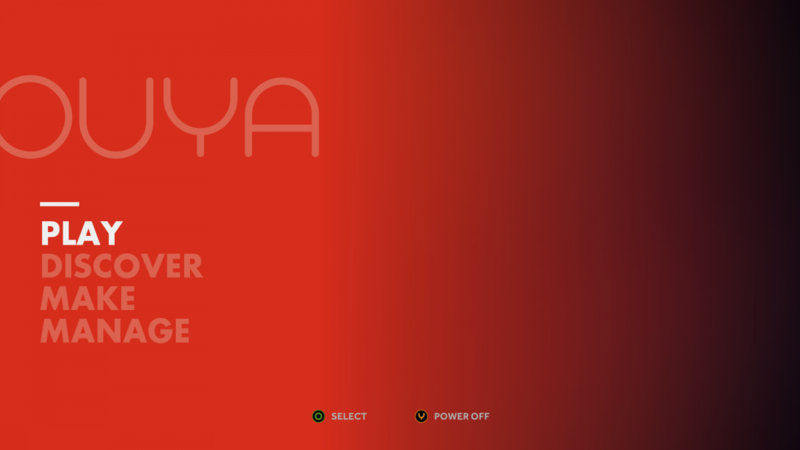
The welcome screen has a menu with 4 selections available: Play, Discover, Make, and Manage. This is the jumping-off point for all things OUYA. It is an attractive menu theme, although some deeper menus are still themed with the stock Android blue and Roboto font.
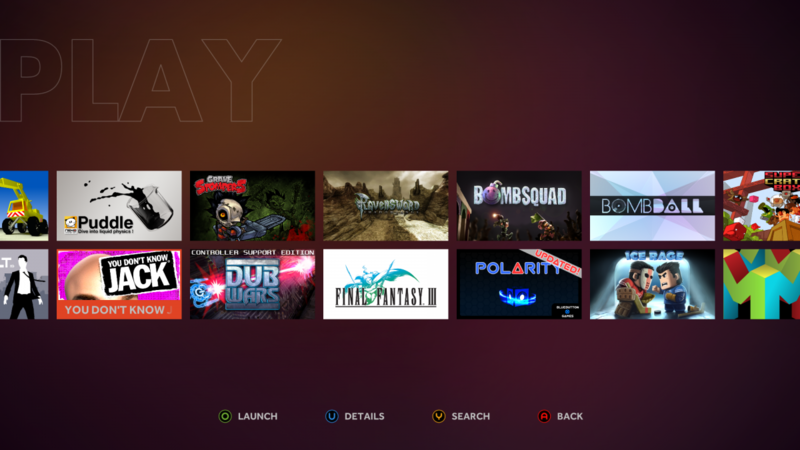
"Play" is where all downloaded games live. Newly downloaded games are added to the right side of the list, while the most recently played games are moved to the far left. When an update becomes available for a game, the update must be downloaded and installed before the game can be played again. It would be nice to use more screen real estate to display more games at once, or be able to switch to a list view.
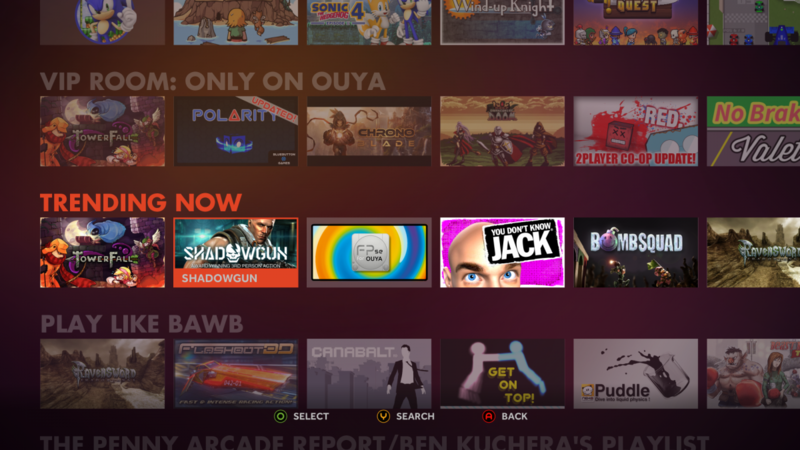
"Discover" is where new games can be found and downloaded. There are multiple categories that group games into things like trending titles, new games, OUYA exclusives, and personal playlists. These categories can be very repetitive, and some games may not even be found without knowing the name and using the search function. While a cool idea, this seems more like an alternative layout. Having a way to group these games without redundancies, either by alphabetical order or genre, would be much more user-friendly.
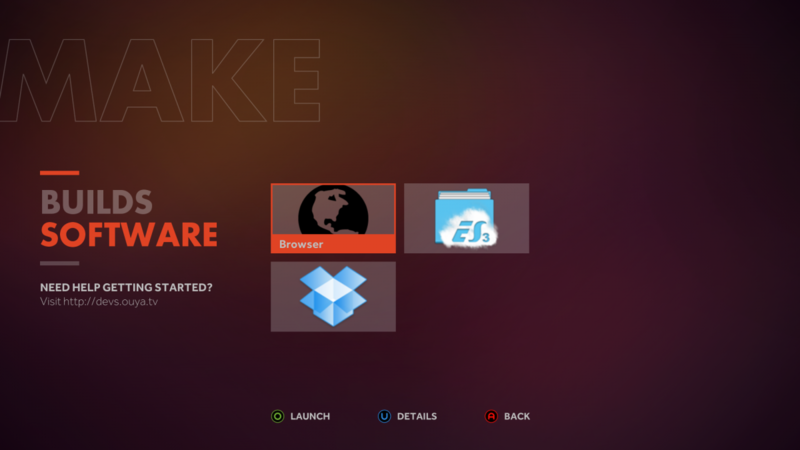
"Make" is where the OUYA web browser and sideloaded games/apps can be accessed. The reason it's called "Make" is because there are also tools for developers that create OUYA games. The web browser can be used to download files directly to the OUYA's internal memory as an alternative to transferring files from computer to OUYA via micro-USB.
Many apps that can be downloaded for free outside the Google Play Store can be installed here (even games). Since there is no touch screen, the OUYA controller's touchpad can be used to make selections within apps. Advanced users can even try their hand at getting the Play Store and its content onto the OUYA, however this requires a bit of "hacking" -- but that's what's so great about having an open (not locked down by the manufacturer) console.
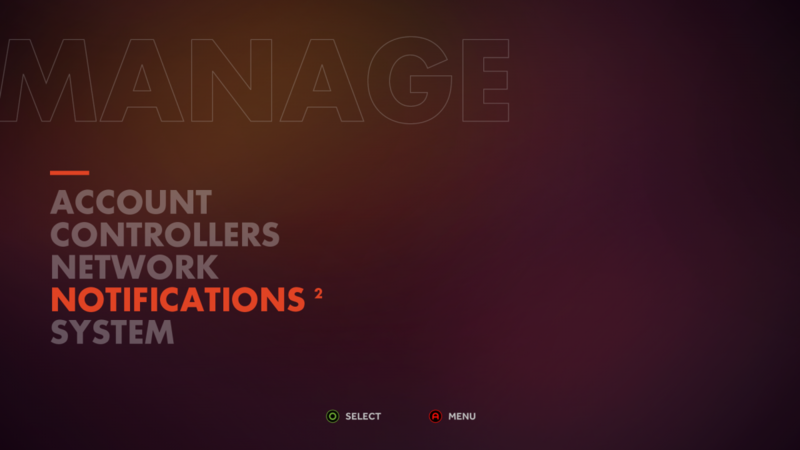
"Manage" is where OUYA accounts, networks, controllers, and other system settings can be, well, managed. Selecting "System" will take you to an Android settings menu that is unchanged from its phone and tablet version (tweaking the Android menu to look as sharp as the OUYA menu above would add to visual continuity -- in a future update maybe?).
The games
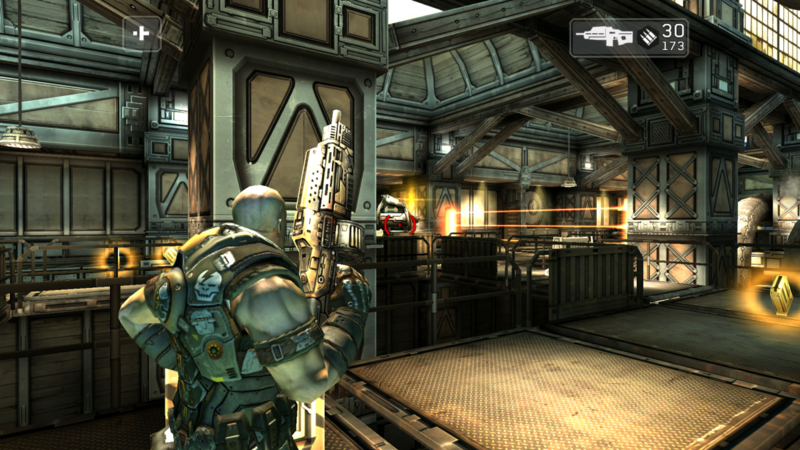
As any gamer knows, what makes or breaks a video game console is the games. Above is a great example of a kick-ass game that looks and plays great on the OUYA: Shadowgun. First-person shooters were meant to be played with real life, physical controls -- on-screen controls just aren't the same. This is the perfect game to compare physical and virtual controls, because it has been out for a year, and most Android gamers have probably already played and/or beaten it.
The OUYA had no problem keeping up with Shadowgun, blasting through the levels and enemies. The Tegra processor optimization really shines in a game like this, giving great in-game performance with minimal lag.
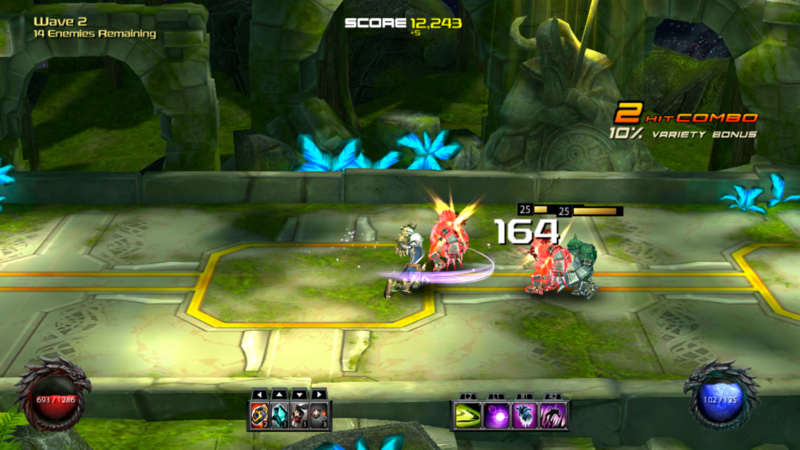
Game performance is not consistent across all titles, however. The frenzied action game ChronoBlade is an example of less than stellar game performance. The fun is all based on combo'ing enemies into oblivion; increase the enemies, increase the fun. Add another player to increase the comb'i'ng for even more fun. However, the OUYA does not handle this much fun well -- as the number of players and enemies increases, so does game lag.
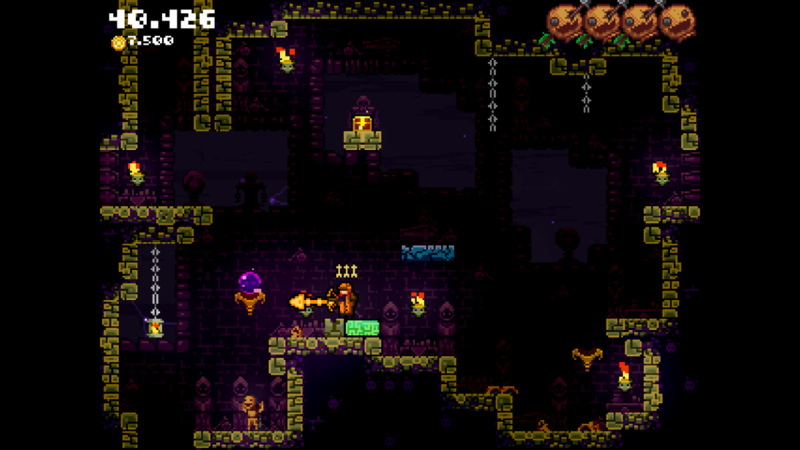
Many games take the retro approach when it comes to graphics, mimicking 1980s and 1990s console games. TowerFall is one such game, where its gameplay is as simple as its graphics -- while still being extraordinarily fun. Multiplayer brawls between these small character sprites who are, shooting, ducking, hiding, and jumping through levels can get very intense. It's the perfect example of a game that puts fun before graphics. More than one player is needed to really make the most out of this game; the single-player mode still needs some work (perhaps by adding computer A.I. battles).
While the above games are definitely worth playing, there are just too many games in the OUYA store that are not. The must-play, high quality games are too few and far between. Instead, there are many games that would feel more at home as mini-games inside full-fledged games, and off-beat/quirky games that can be fun to try, but don't stand up to the handful of quality games in OUYA's store.
Emulators




















The OUYA makes an excellent old-school gaming machine. The official store has emulators available for direct download, including NES.emu, Snes9x EX+, Mupen64Plus, and GBA.emu. Others that support games from makers like Sega, SNK, and Sony will also work, but are only available through sideloading.
As far as emulators available on the OUYA store, the system runs games for the NES, Super Nintendo, and GameBoy Advance with little or no problems. Later generation console games, such as titles from Nintendo 64, are still fairly buggy, but playable. Expect graphical glitches, performance problems, or both -- depending on the game. For example, Mario Kart 64 runs very well with a few emulator system settings tweaks, while Super Smash Bros for the N64 has minor problems with virtually all settings configurations.
Easy access to emulators on a high definition television (not that most of the games need that kind of resolution) is a huge plus for the OUYA, and anyone interested in these kinds of games.
The bugs
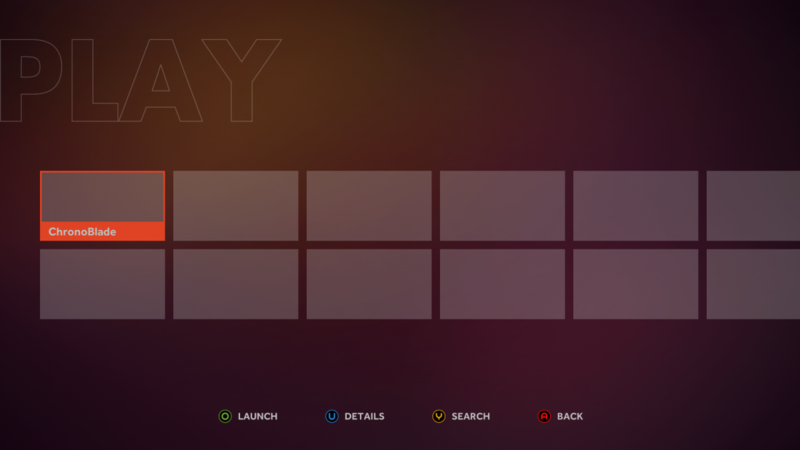
The OUYA is still in its infancy, and there are still a lot of problems that need to be worked out. The above screenshot is an example. Sometimes game tiles in the "Play" and "Discover" menus will take a noticeably long time to load, or will not load at all. This may be related the to connectivity problems, as internet connectivity will briefly disconnect from time to time. OUYA system updates will sometimes fail repeatedly, and games will occasionally display toast messages about failures connecting to their servers.
One of the most frustrating problems is system instability. There's nothing worse than getting into a heated round of the trivia game You Don't Know Jack, and being abruptly taken to the OUYA welcome screen. Since exiting games closes them, it's basically a random reset. This happened a few times in different games, with both single and multiplayer. Having a game close without warning, with no way to resume gameplay, just makes me want to turn off the console. This jumping to the welcome screen isn't limited to being in-game either -- updating games or navigating OUYA's menus will sometimes cause a crash and a jump to the welcome screen.
I've also had one instance of a game disappearing from my library: Mupen64Plus. For whatever reason, one day it was just gone. All of Mupen64Plus's files were still saved to OUYA's internal memory, including game ROMs and save states -- allowing my games to be picked up right where they left off after re-downloading the emulator. Very strange.
The bottom line
Having such a small price point makes it easier to purchase an OUYA simply as a "toy," and not as a serious/hardcore gaming console. The flexibility in using other console controllers, as well as Android devices as controllers, helps keep the Android-powered gaming system at the budget level. Being the first generation of a new kind of console, problems at launch are to be expected. The OUYA team seems dedicated in their quest for a "videogame revolution," and with many of the OUYA's problems being most likely software-based, things may get much, much better.
In its current state, the OUYA makes an excellent substrate for emulators and game ROMs. Android fans who love to sideload, root, ROM, and tweak their devices to their liking can get a lot of mileage out of the OUYA. For example, while the OUYA still lacks official support for apps like Netflix and Hulu, those who are comfortable sideloading can still get these apps on the OUYA through various workarounds. Even a method to install the Google Play Store is available for those who are willing to "hack" around in the OUYA's software. These users are usually a group that is willing to work through bugs and can wait for OS updates to fix current problems. For this subset of users, a purchase of the OUYA today could be justified.
Users who want a gaming system that works great out of the box with a game library that justifies buying, setting up, and keeping a new piece of gaming hardware may want to hold off on their purchases. The OUYA store's game library is still on the weak side, with just a handful of really standout games. While it isn't fair to compare the OUYA to game consoles that cost 5, 6, or 7 times as much, even in its own right it feels like the current OUYA game climate comes up short. The OUYA system software also needs a good amount of work to make the gaming experience more seamless and trouble-free. Perhaps in another 6 months, or if/when the OUYA 2 is released, the "videogame revolution" will begin to get some real traction.



















